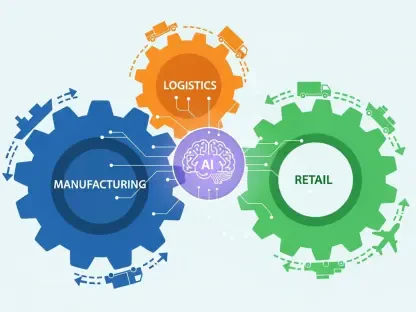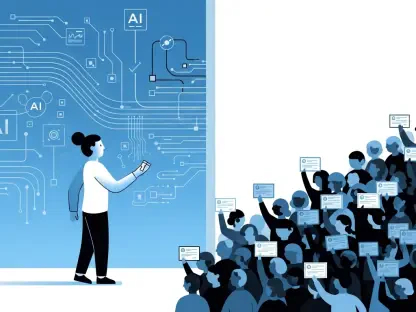In the rapidly evolving landscape of global business, enterprises are grappling with unprecedented levels of complexity that traditional automation can no longer effectively manage, as sprawling supply chains, diverse regulatory frameworks, and relentless digital disruptions expose the shortcomings of rigid, rule-based systems that once promised efficiency. Today, the stakes are higher than ever, as businesses must adapt swiftly to geopolitical shifts, environmental challenges, and technological advancements. Enter orchestration—a transformative approach that integrates artificial intelligence (AI) and digital agents to create a smarter, more responsive framework. Far beyond merely automating repetitive tasks, orchestration enables intelligent coordination across systems, teams, and external partners, positioning enterprises to thrive in an AI-driven era. This article delves into the pivotal shift from automation to orchestration, exploring how it equips businesses to navigate modern challenges with agility and precision. Key areas such as data readiness, governance, and human-AI collaboration will be examined to uncover how orchestration serves as the backbone of an AI-ready enterprise. By understanding and implementing this advanced strategy, organizations can unlock new levels of competitiveness and resilience in an increasingly interconnected world.
Breaking Free from Automation’s Constraints
The journey toward an AI-ready enterprise begins with recognizing the limitations of traditional automation. For decades, automation has been a trusted tool for streamlining repetitive processes, minimizing human error, and boosting operational efficiency. However, as businesses expand across borders and industries, the rigidity of these rule-based systems becomes a significant drawback. Automation often operates in isolation, unable to adapt to unexpected disruptions or handle the nuances of complex, multi-layered ecosystems. Whether it’s a sudden supply chain bottleneck or a new regulatory mandate, automated processes frequently fall short, leaving organizations scrambling to address gaps manually. This inherent inflexibility highlights a critical need for a more dynamic solution that can respond to real-time changes and integrate diverse data sources seamlessly. Without such adaptability, enterprises risk falling behind in a landscape where speed and precision are paramount.
Orchestration emerges as the answer to these challenges, offering a paradigm shift from static automation to intelligent coordination. Unlike its predecessor, which relies on predefined instructions, orchestration leverages AI to analyze context, reason through scenarios, and execute actions across interconnected systems. This approach ensures that decisions are not only reactive but also proactive, drawing on shared data to anticipate needs and align with broader business goals. By facilitating collaboration among internal teams, external partners, and digital platforms, orchestration creates a cohesive environment where information flows freely and responses are synchronized. For enterprises aiming to harness AI’s full potential, this transition represents a foundational step, enabling them to move beyond siloed operations and toward a unified, agile framework capable of tackling the complexities of today’s global market.
Harnessing Agentic Orchestration for Human-AI Synergy
Central to the concept of orchestration is the idea of “agentic orchestration,” where AI-driven digital agents play a pivotal role in enhancing enterprise capabilities. These agents are designed to perceive situations, apply reasoning, and take action within parameters set by human overseers. Far from replacing human input, this model—often referred to as human-to-agent (##A)—fosters a collaborative dynamic. Humans define strategic objectives and establish boundaries, while agents manage intricate, multi-step processes that would otherwise demand extensive time and effort. This synergy allows enterprises to scale operations without sacrificing oversight, ensuring that critical decisions remain aligned with organizational priorities. In practice, this means faster resolution of issues, from rerouting shipments during a logistics crisis to automating compliance checks across jurisdictions, all while maintaining a human touch at the helm.
The impact of agentic orchestration on decision-making cannot be overstated. By offloading complex coordination tasks to AI agents, enterprises can respond to challenges with unprecedented speed and accuracy. Consider a scenario where a manufacturing firm faces a sudden quality control issue—agentic orchestration enables real-time data analysis across production lines, identifies the root cause, and triggers corrective measures without delay. Meanwhile, human leaders focus on long-term strategy, confident that operational details are handled efficiently. This division of labor not only boosts productivity but also empowers teams to innovate, as they are freed from the burden of repetitive or data-intensive tasks. As businesses navigate increasingly volatile environments, the ability to blend human insight with AI precision through orchestration becomes a competitive edge, paving the way for sustained growth and resilience.
Building a Robust Data Foundation for Orchestration
No matter how advanced AI technologies become, their effectiveness in orchestration hinges on the quality of the underlying data. Data readiness—encompassing cleanliness, connectivity, and contextual relevance—stands as the cornerstone of any successful AI initiative. For enterprise leaders, particularly Chief Information Officers (CIOs), the priority must shift from acquiring cutting-edge AI models to constructing interoperable data architectures. Such systems ensure that information retains its meaning and timeliness as it moves across departments, partners, and platforms. Without this foundation, even the most sophisticated orchestration efforts risk failure, as disconnected data silos or inconsistent formats can distort insights and hinder coordination. A commitment to data readiness transforms raw information into a strategic asset, enabling AI to deliver actionable results that drive business value.
The consequences of neglecting data readiness are starkly evident in enterprises struggling with fragmented systems. When data lacks structure or traceability, orchestration cannot achieve its full potential, leading to delayed responses and missed opportunities. Conversely, organizations that invest in unified data frameworks unlock the ability to integrate insights seamlessly, whether tracking inventory in real time or predicting demand fluctuations. This level of preparedness empowers AI agents to operate with precision, ensuring that every decision reflects the most current and accurate information available. For CIOs tasked with steering their organizations toward an AI-ready future, the message is clear: building a robust data ecosystem is not a secondary concern but a prerequisite for orchestration to thrive, ultimately determining the success of digital transformation efforts across the board.
Ensuring Trust Through Governance in Orchestration
As orchestration embeds AI agents into core enterprise functions, the importance of governance and trust cannot be overlooked. Without clear guidelines, the risk of unchecked actions or misaligned outcomes looms large, potentially undermining the benefits of intelligent coordination. Effective governance starts with embedding human oversight into every agentic process, ensuring that AI decisions align with strategic goals and ethical standards. Principles such as least-privilege access protect sensitive data by restricting agent capabilities to what is strictly necessary, while auditability ensures transparency in every action taken. Additionally, tying orchestration outcomes to measurable metrics—such as service delivery or compliance rates—provides a tangible way to assess performance and maintain accountability across the board.
Trust, as a byproduct of strong governance, serves as the glue that binds human and AI collaboration in orchestration. When employees and stakeholders see that AI systems operate transparently and within defined boundaries, confidence in these tools grows, fostering wider adoption. For instance, in industries like pharmaceuticals, where regulatory adherence is non-negotiable, governance frameworks ensure that orchestration not only streamlines order management but also upholds stringent standards. Enterprise leaders, especially CIOs, bear the responsibility of designing these systems to balance innovation with caution, preventing AI from becoming a liability. By prioritizing transparency and responsibility, businesses can scale orchestration confidently, knowing that their AI-driven processes reinforce organizational values and meet external expectations, thus solidifying trust at every level.
Paving the Path Forward with Orchestration
Looking back, the evolution from automation to orchestration marked a turning point for enterprises navigating the complexities of an AI-driven world. This shift addressed the shortcomings of rigid systems by introducing intelligent, adaptive coordination that empowered organizations to tackle disruptions with finesse. Reflecting on the journey, agentic orchestration stood out as a catalyst, blending human strategy with AI execution to enhance decision-making across industries. Data readiness proved to be the bedrock of this transformation, while governance frameworks ensured that trust remained intact amidst rapid technological change. The real-world impact, seen in streamlined supply chains and optimized manufacturing processes, demonstrated orchestration’s capacity to deliver measurable value. As enterprises move forward, the next steps involve deepening investments in interoperable data systems and refining governance models to keep pace with evolving AI capabilities. Exploring cross-industry applications of orchestration could further unlock innovative solutions, ensuring that businesses remain agile and competitive. By committing to these priorities, organizations can solidify their standing as AI-ready, equipped to anticipate challenges and seize opportunities in an ever-changing global landscape.









